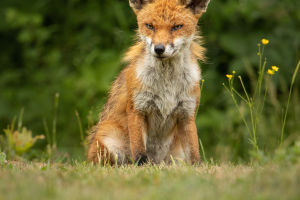The Red-Crowned Crane
The Red-crowned crane, also known as the Japanese crane, is a large, beautiful bird found in eastern Asia.
It is one of the rarest and most magnificent species of crane in the world and is known for its stunning appearance and graceful movements.
Characteristics
The Red-crowned crane is a large bird, measuring up to 5 feet in height and weighing up to 15 pounds. Its wingspan can reach up to 8 feet, making it one of the largest flying birds in the world. The bird's plumage is mainly white, with a distinctive red patch on its crown and black feathers on its wings.
The Red-crowned crane has a long neck, which it holds in an S-shape when in flight or walking. Its beak is long and pointed, and it has long, thin legs that are black.
Behavior
The Red-crowned crane is a social bird that lives in pairs or small family groups. During the breeding season, pairs of cranes perform elaborate courtship dances, which involve bowing, jumping, and calling. The dance is an essential part of the pair-bonding process and helps to establish and strengthen the pair's relationship.
The Red-crowned crane is a vocal bird and has a range of calls, including bugling, trumpeting, and honking. These calls are used to communicate with other cranes and to establish territory. The bird is also known for its graceful movements, which are particularly evident during flight and courtship dances.
Conservation status
The Red-crowned crane is classified as an endangered species by the International Union for Conservation of Nature (IUCN). The population of the bird has declined significantly over the years due to habitat loss, hunting, and pollution. In the early 20th century, the bird was almost extinct, with only 30 individuals remaining.
However, thanks to conservation efforts, the population has increased to over 1,500 individuals, although the species remains at risk of extinction.
Conservation efforts for the Red-crowned crane have focused on protecting and restoring the bird's habitat. Efforts have also been made to reduce hunting and poaching, as well as to control pollution in the bird's breeding and feeding grounds.
In addition, captive breeding programs have been established to increase the population of the bird in the wild. These programs have been successful in producing healthy chicks, which are then released into the wild to help bolster the population.
The Red-crowned crane is a magnificent bird that is known for its stunning appearance and graceful movements. It is a vital part of the ecosystem in eastern Asia and plays an essential role in maintaining the balance of wetland and marsh habitats.
However, the bird population is at risk of extinction due to human activities such as hunting, pollution, and habitat loss. It is up to us to protect and conserve this beautiful bird so that future generations can enjoy its beauty and grace.


